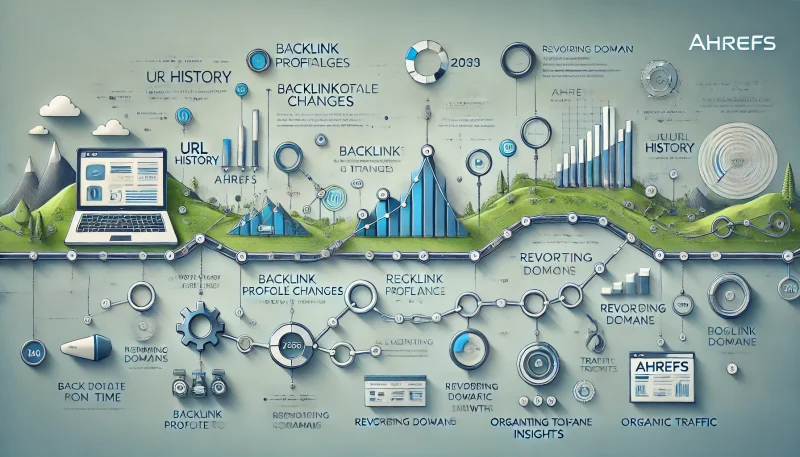
How to Improving URL Rating (UR)
URL Rating (UR) is a key metric used in SEO to evaluate the strength of a specific web page’s backlink profile, on a scale from 0-100. Improving your UR can enhance your page’s visibility in search engine results and boost organic traffic. Here’s an in-depth guide to strategies for increasing your URL Rating effectively.
1. Create Linkable Assets
Developing high-value, shareable content is one of the best ways to attract quality backlinks naturally. Some examples include:
- Detailed Industry Reports: Provide unique, data-driven insights into your niche.
- Interactive Tools: Build calculators, quizzes, or templates that offer value to users.
- Infographics: Simplify complex data into visually appealing formats that others are likely to share and link.
- Original Research: Publish new studies or surveys that provide novel insights.
These resources serve as evergreen content, continuously drawing backlinks as they establish your site as an authority in your field.
2. Conduct Competitor Backlink Analysis
Analyzing your competitors’ backlink profiles can uncover valuable link-building opportunities. Tools like Ahrefs and SEMrush help identify:
- Backlink Sources: Discover the websites linking to your competitors.
- Link-Building Strategies: Understand their successful tactics and replicate them for your content.
Repurposing their strategies for your unique content can yield significant gains in UR.
3. Publish Long-Form, Comprehensive Content
Content that is detailed and authoritative tends to attract more quality backlinks. To ensure success:
- Cover topics thoroughly and provide actionable insights.
- Use unique data, case studies, or expert opinions to differentiate your content.
- Longer content (2,000+ words) statistically performs better in acquiring backlinks due to its perceived depth and value.
4. Broken Link Building
This method involves identifying broken links on authoritative websites and offering your content as a replacement. Steps include:
- Use tools like Ahrefs or Screaming Frog to find broken links.
- Create or repurpose content to fill the gap.
- Reach out to the website administrators with your suggestion.
This strategy provides value to webmasters by helping them fix their sites while earning you a valuable backlink.
5. Collaborate with Industry Influencers
Engage with thought leaders in your industry to boost your content’s visibility. Effective methods include:
- Co-Creating Content: Collaborate on guides, videos, or reports.
- Participating in Roundups: Get featured in expert compilations or interviews.
- Mentions and Links: Encourage influencers to reference your content in their blogs or social posts.
Their established authority can amplify your content’s reach and linkability.
6. Showcase Case Studies and Success Stories
People love actionable insights backed by real-world results. Case studies and success stories are highly linkable because they:
- Provide detailed, measurable outcomes.
- Highlight industry challenges and solutions.
- Offer insights that others can apply in their contexts.
7. Optimize Technical SEO
A strong technical foundation ensures that your pages are easy to crawl and index, indirectly supporting better backlink acquisition. Focus on:
- Page Speed: Faster loading pages improve user experience.
- Mobile-Friendliness: Ensure your content is fully responsive across devices.
- Site Structure: Maintain a clean, crawlable architecture.
8. Build a Robust Internal Linking Strategy
Internal linking helps distribute link equity across your site. Use pages with high UR to boost the authority of lower-ranking pages by strategically linking to them.
9. Promote Your Content
Even the best content needs visibility to attract backlinks. Use these channels to amplify your reach:
- Social Media: Share your content across platforms.
- Email Outreach: Notify industry contacts about new resources.
- Content Syndication: Distribute articles to relevant platforms.
10. Create Case Studies and Success Stories
- Showcase real-world results
- Provide actionable insights
- Include data and measurable outcomes
- Such content is highly linkable
10. Consistently Monitor and Improve
Regularly track your UR progress using tools like Ahrefs. Audit your backlink profile to disavow harmful links and replace outdated content to maintain relevance.
By combining these strategies, you can systematically improve your URL Rating, strengthen your page’s authority, and enhance its performance in search engines. The goal is not just to increase UR but to create a holistic content ecosystem that delivers value and encourages organic growth.
Is UR similar to Google’s PageRank?
UR (URL Rating), a metric from Ahrefs, is conceptually similar to Google’s PageRank but operates differently in its calculation and application. Here’s a breakdown:
Similarities:
- Link Authority: Both UR and PageRank evaluate the authority of a page based on the quality and quantity of links pointing to it.
- Backlink Signals: Both systems use backlinks as primary indicators to assess how valuable or authoritative a page is within a network of web pages.
Differences:
- Transparency:
UR: Ahrefs provides a numerical score (0-100) for URL Rating, making it more transparent to users.
PageRank: Google no longer provides public access to PageRank scores, making it less visible to the public.
- Metrics:
UR: Focuses on the strength of a specific URL based on its backlink profile, with higher weight given to links from high-authority sites.
PageRank: Considers the overall link flow throughout the entire web, factoring in internal and external links.
- Freshness:
UR: Updated frequently based on Ahrefs’ crawling and index data.
PageRank: Operates on Google’s private algorithm, which is continuously updated but undisclosed.



